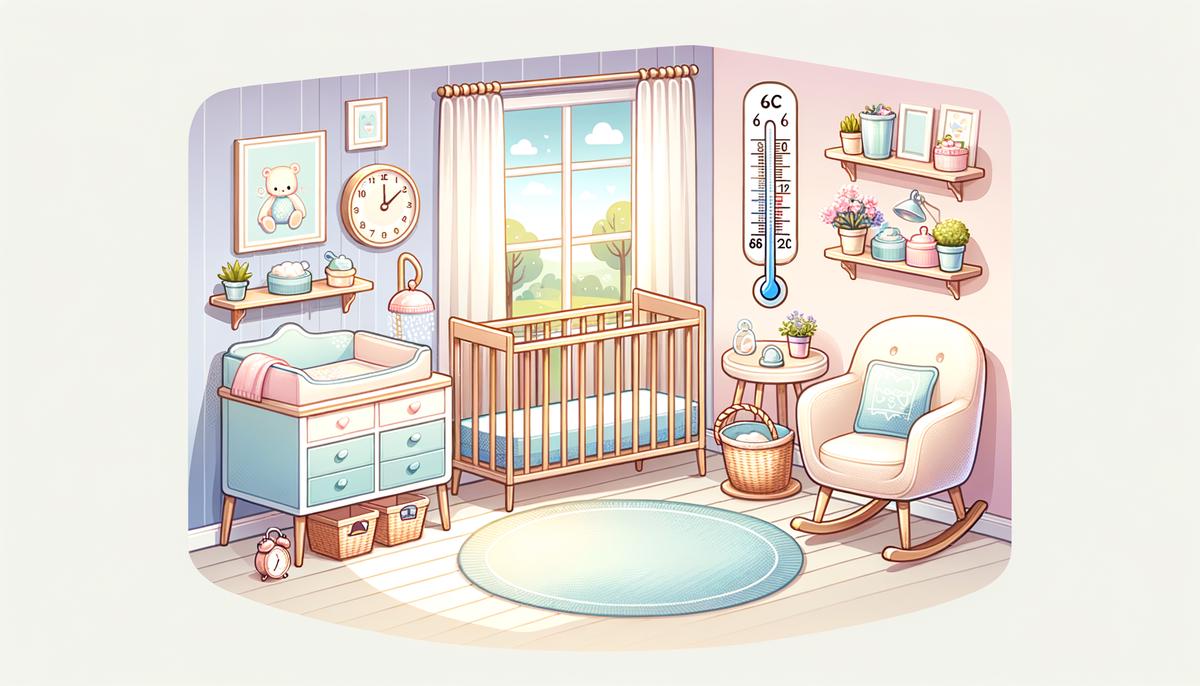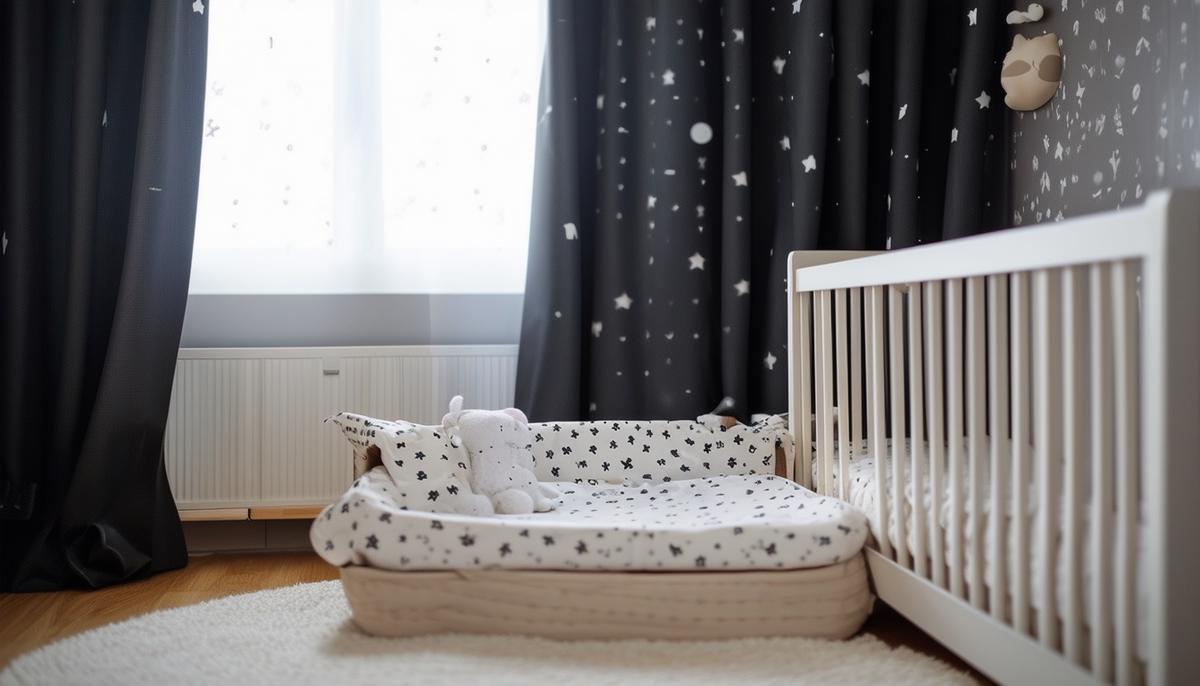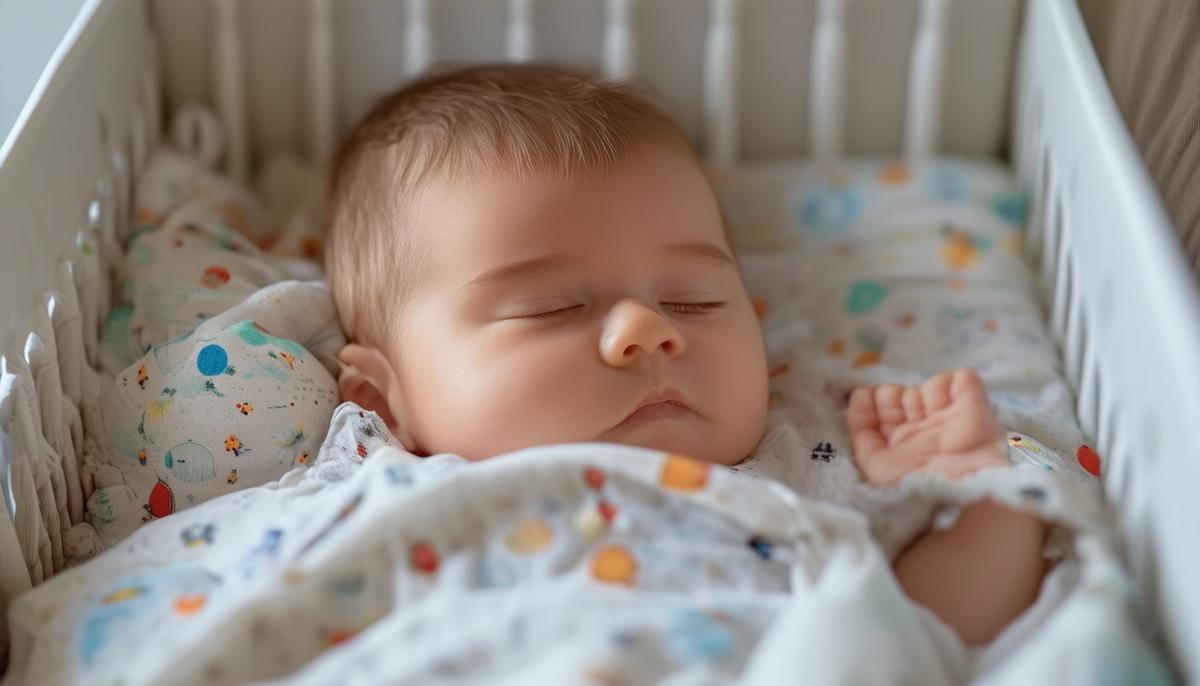Temperature and Sleep Quality
The ideal room temperature for babies, between 68-72°F (20-22°C), supports better sleep and significantly reduces the risk of Sudden Infant Death Syndrome (SIDS). When babies sleep in cooler conditions, their bodies can cool down more efficiently, aiding melatonin production. This hormone initiates and maintains sleep. A cooler room helps slow metabolism, reduce alertness, and facilitate smoother sleep transitions throughout the night.
Dressing your baby appropriately ensures they remain comfortable without overheating. If controlling the room temperature is difficult, consider dressing your baby in lightweight, breathable fabrics. A good rule is to use one more layer than you would wear yourself in the same conditions. Sleep sacks, instead of loose blankets, provide warmth without the risk of suffocation, making them a safer option.
Overheating poses risks beyond disrupting sleep quality. Overdressing or over-bundling can lead to excessive heat retention. Check if your baby's chest or back is sweaty or overly warm; if so, adjust their layers. Overheating is linked to a higher risk of SIDS, making it vital to monitor your baby's temperature.
Fans promote air circulation and cooling. They help maintain a consistent environment, especially in rooms where temperature control is challenging. Placing a fan in the room ensures steady air flow, reducing the likelihood of hotspots and providing consistent cooling.

Importance of Light and Darkness
Ensuring an optimal light environment is pivotal for promoting healthy sleep patterns in babies. Darkness signals to the body that it is time to rest, working in harmony with the body's natural circadian rhythm. This rhythm influences numerous physiological processes, including sleep-wake cycles.
Creating a dark sleep environment involves several practical steps. Using blackout curtains or window covers can effectively block external light sources like streetlights or early morning sunlight. These coverings ensure the room remains dark, creating an optimal setting for melatonin production and better sleep quality. Blackout curtains fit snugly against windows, preventing light leakage around the edges.
Overstimulation from light is another crucial aspect. Babies are highly sensitive to environmental stimuli, and light is a significant overstimulation factor. A brightly lit room can distract or excite your baby, making it difficult for them to settle down for sleep. This is especially true if your baby's room has stimulating objects like mobiles with lights or glowing toys.
For nighttime feeds or diaper changes, use a soft, red-toned night light. Red light is less disruptive to melatonin production compared to the blue or white light spectrum. A dim red light is enough to see without fully waking your baby or yourself, preserving sleepiness and making it easier for everyone to return to sleep.

Managing Noise Levels
White noise can be a powerful tool in crafting a sleep-friendly environment for your baby. The consistent, soothing sound helps mask disruptive noises that might otherwise wake your baby, such as household sounds or street traffic. White noise mimics the constant and comforting sounds experienced in the womb, creating a familiar and calming sleep environment.
To ensure the safe and effective use of white noise machines, consider these guidelines:
- Placement at a safe distance from your baby's crib
- Keeping the volume at a safe level (no more than 50-60 decibels)
- Opting for continuous, monotonous sounds like white noise, rain, ocean waves, or gentle fan noises
While it's natural to worry about creating habits that might seem difficult to break later, research and expert opinions often suggest that the benefits outweigh the potential drawbacks. White noise is not addictive or habit-forming; it's simply an environmental factor that can be easily adjusted over time. If you decide to phase out white noise, you can do so gradually by lowering the volume incrementally each night until it's barely noticeable or completely turned off.

Creating a Safe Sleep Environment
Creating a safe sleep environment is paramount to ensuring your baby not only sleeps well but also stays safe throughout the night. Ensuring the crib meets the latest safety standards, with a firm, snug-fitting mattress and no gaps where your baby's head or limbs could get trapped, is essential. Avoid using older cribs, which might not adhere to modern safety guidelines, and always follow the manufacturer's guidelines for assembly and use.
Loose bedding, including pillows, blankets, and stuffed toys, should never be placed in the crib. These items can pose a suffocation risk. Instead, use a fitted sheet designed specifically for the crib mattress. Sleep sacks or wearable blankets are safer alternatives to loose blankets, keeping your baby warm without the associated risks of suffocation.
It's important to always place your baby on their back to sleep, as this sleep position significantly reduces the risk of SIDS. Room-sharing without bed-sharing is highly recommended, especially in your baby's first six months. Placing the crib or bassinet in the same room as where you sleep makes it easier to monitor your baby while also reducing the risk of SIDS.
For optimal airflow, keep the sleep area well-ventilated. Using a fan in the room can help promote air circulation and has been shown to reduce the risk of SIDS by up to 72%.

- Moon RY, Task Force on Sudden Infant Death Syndrome. Sleep-related infant deaths: Updated 2022 recommendations for reducing infant deaths in the sleep environment. Pediatrics. 2022;150(1):e2022057990.
- Weissbluth M. Healthy Sleep Habits, Happy Child. New York: Ballantine Books; 1989.
- Mindell JA, Li AM, Sadeh A, et al. Bedtime routine intervention for sleep disturbances in infants and young children. J Pediatr. 2015;166(2):452-459.e2.
Leave a Reply